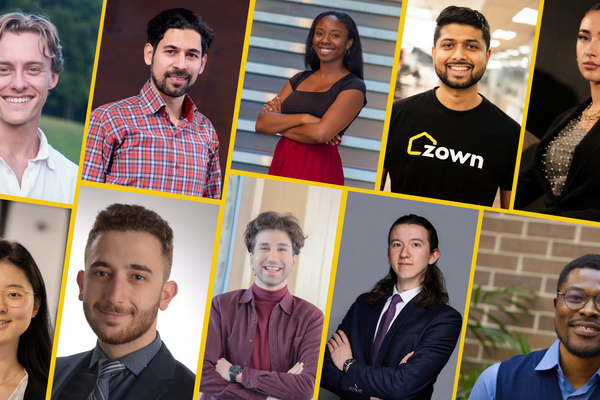
Exploring the polar regions
Alum experiences the trip of a lifetime aboard a Sea Women Expedition research mission

Alum experiences the trip of a lifetime aboard a Sea Women Expedition research mission
By Charlotte Danby Faculty of EngineeringIt’s said that an engineering degree can take you places. For Waterloo University alumnus Stephanie Holko (BASc ’04, chemical engineering) her studies led her somewhere extraordinary - swimming with orcas off the coast of Norway on an all-women research expedition.
Holko discovered Sea Women Expeditions (SWX) by chance in 2022 when her interest in the polar regions led her to an online lecture that mentioned the organization’s work. As an advocate for women in STEM, Holko felt an immediate click with its mission to scout, record and document a warming Arctic, as well as to provide opportunities for Indigenous women, non-Indigenous women and gender diverse people to gain leadership skills and field experience. She applied to join its November 2022 expedition to Norway, sat the interview and was accepted.
“Sea Women Expeditions represent a diversity of professions, ages, nationalities, interests, heritages and attributes,” says Holko who works as a director of project development at Next Generation Manufacturing (NGen) Canada. She is also the president and chair of the board for the Ontario Society for Professional Engineers.
“Our expedition of 34 women, non-binary and two-spirited people from 10 different countries included ocean explorers, scientists, engineers, artists, photographers, videographers, writers, lawyers, historians, traditional knowledge holders, educators, students and scuba diving professionals between the ages of 20 and 70 years old. It was a powerful mix – we all learnt a lot from each other.”
Ship-shape
The expedition took place during the winter herring run in Norway’s Arctic fjords some 350 kilometers north of the Arctic Circle. Holko describes herself as a strong swimmer, but she wanted to be as prepared as possible for the unknown Norwegian Sea. Leading up to the trip, Holko spent a summer swimming the cold black lakes of Muskoka, Canada and familiarising herself with wetsuits and dive gear.
 Waterloo Engineering alumn Stephanie Holko (BASc ’04, chemical engineering) experienced the trip of a lifetime on a Sea Women Expedition that took her to explore Norway's Arctic fjords.
Waterloo Engineering alumn Stephanie Holko (BASc ’04, chemical engineering) experienced the trip of a lifetime on a Sea Women Expedition that took her to explore Norway's Arctic fjords.
“I even got a scuba diving certification which wasn't required, but it definitely boosted my confidence and helped me navigate my way around the fjords”, says Holko.
She also spent time with a trainer to build her upper body strength – just in case. The training paid off as Holko, wearing a bulky dry suit from head to toe, had to pull herself back into an inflatable boat after snorkling missions.
“I dedicated a whole year of exercise to preparing my body for that one manoeuvre and I’m so glad I did. Engineers are a practical bunch,” she says with a grin.
Leading and learning
Sea Woman Expeditions have been endorsed by the UN Decade of Ocean Science for Sustainable Development for their research contributions. On this particular trip, the SWX team collected data on environmental DNA and orca behaviour to inform further studies on how climate change is affecting Arctic habitats. This included taking regular samples from the water column at different times and depths to test what species are present in certain environments and recording video footage of the orcas interacting with their environment.
Holko describes the entire experience as “incredible” but highlights a few standout moments. One was her role on the SWX women’s leadership program where she co-facilitated team building workshops and leadership training sessions. Her co-lead, Leslie Anne St. Amour, is an environmentalist, an outdoor guide and a lawyer who practices sport and Indigenous law. The two of them brought very different perspectives to the table that Holko says enabled them to deliver an inclusive, challenging and valuable program for the team.
“I cannot fully express the joy this trip gave me,” says Holko. “I met extraordinary women, non-binary and two-spirited people that I would never have run into in my day-to-day life. Watching these brilliant people do the work they loved and were born to do – without inhibition or ego – was awesome.”
People weren’t Holko’s only inspiration. On her last day, a pod of 20+ orcas swam up close to the Sea Women Expeditions vessel to feed on schools of fish – birds and humpback whales were feasting too. Holko and her crewmates just sat aboard and watched these magnificent creatures fill their bellies for almost an hour. As the feast came to an end and things quietened down a bit, Holko and others jumped in to swim with the animals.
“We could hear them talking to each other in clicks and whistles. It was the best way to end the trip, surreal and beautiful.”

Read more
From transforming solutions for homeownership to advancing health care interventions, Waterloo talent continues to disrupt industries and drive change

Read more
New Canada Research Chairs will tackle future-focused problems from social robots and intergroup attitudes to geochemistry and nanoscale devices

Read more
Twenty-six researchers receive federal funding to drive discovery, innovation and research infrastructure development
The University of Waterloo acknowledges that much of our work takes place on the traditional territory of the Neutral, Anishinaabeg, and Haudenosaunee peoples. Our main campus is situated on the Haldimand Tract, the land granted to the Six Nations that includes six miles on each side of the Grand River. Our active work toward reconciliation takes place across our campuses through research, learning, teaching, and community building, and is co-ordinated within the Office of Indigenous Relations.